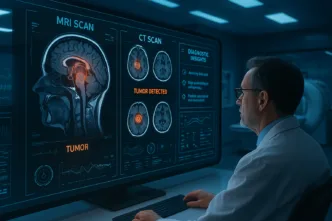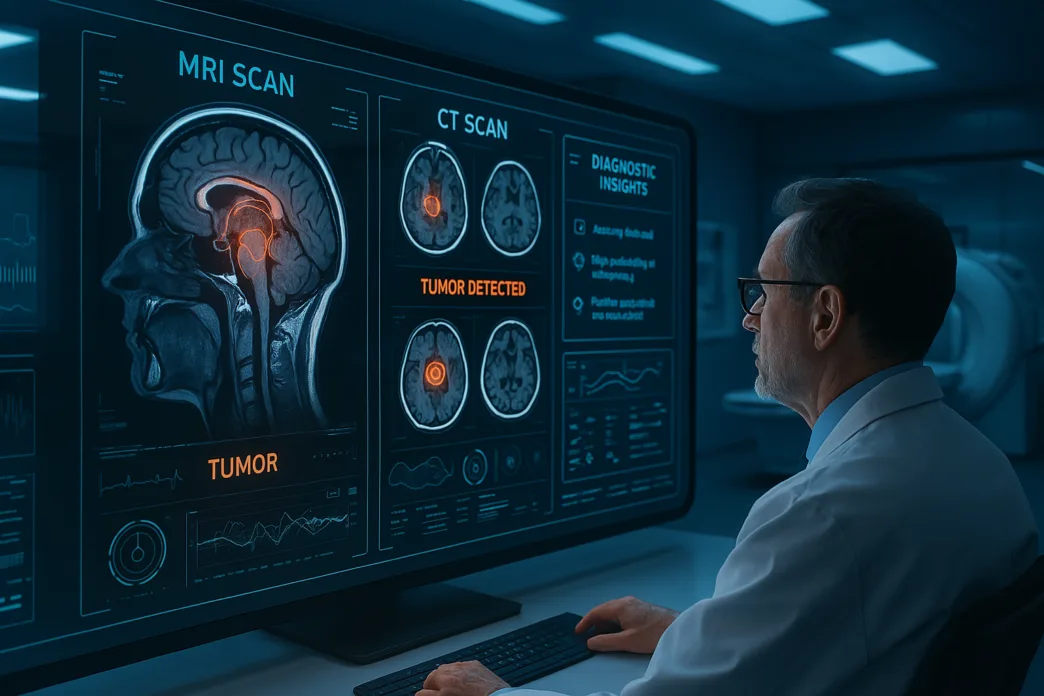Revolutionizing Diagnostics: The Power of AI in Medical Imaging
Meta Description: Discover how AI in medical imaging is transforming diagnostics, boosting accuracy, and reshaping healthcare delivery. Explore key innovations and future trends in AI-powered radiology.
Introduction
Artificial intelligence is rapidly transforming the healthcare landscape, with one of its most profound impacts seen in medical imaging. From detecting early-stage cancers to identifying rare neurological conditions, AI in medical imaging is accelerating diagnostic accuracy and reducing human error. As we delve into how this technology is reshaping healthcare, we uncover the innovations driving this AI revolution—and what it means for patients and clinicians alike.
How AI is Transforming Medical Imaging
AI is no longer a futuristic concept—it’s a present-day necessity in radiology and diagnostic imaging. Here’s how it’s redefining clinical workflows:
- Automated Image Analysis: Deep learning algorithms can scan thousands of images within seconds, flagging anomalies like tumors or lesions.
- Enhanced Detection Accuracy: AI systems trained on vast datasets now surpass human radiologists in detecting certain cancers, such as breast and lung cancer.
- Workflow Optimization: By triaging urgent cases and automating routine tasks, AI helps reduce radiologists’ workload and patient wait times.
📈 According to a 2024 Stanford study, AI-assisted imaging led to a 32% increase in diagnostic accuracy and 40% faster report generation compared to traditional methods.
Real-World Applications of AI in Imaging
Several AI platforms are already making waves in the medical imaging sector:
- Google’s DeepMind: Achieved near-human accuracy in detecting over 50 eye diseases from retinal scans.
- Zebra Medical Vision: Offers an AI engine that interprets CT scans, flagging cardiovascular risks and bone density issues.
- Aidoc: Delivers real-time image analysis for emergencies like strokes or internal bleeding, enabling faster interventions.
These tools are not just experimental—they’re FDA-approved and used in hospitals globally.
The Ethical and Clinical Challenges
Despite the promise, integrating AI into clinical settings poses challenges:
- Bias and Training Data: AI models trained on non-representative datasets may perform poorly across diverse populations.
- Data Privacy: Storing and analyzing sensitive patient images requires rigorous HIPAA-compliant protocols.
- Physician Trust: Many doctors still prefer human validation, raising questions about liability and decision-making.
Addressing these challenges is critical to ensuring the ethical and effective use of AI in patient care.
What’s Next: The Future of AI in Radiology
The next wave of AI in medical imaging focuses on:
- Multimodal Analysis: Integrating imaging with patient history and lab data for more holistic diagnostics.
- Edge AI Deployment: Running AI directly on imaging devices to enable real-time, offline analysis.
- Explainable AI (XAI): Offering transparency in AI decision-making to gain trust from clinicians.
As these advancements evolve, we can expect AI to become an indispensable co-pilot in diagnostic medicine.
Conclusion: A New Era in Diagnostics
AI in medical imaging is not just enhancing diagnostic capabilities—it’s reshaping the very foundation of healthcare delivery. As algorithms become smarter, faster, and more ethical, the fusion of AI and imaging will lead to earlier detection, more personalized treatment plans, and ultimately, better patient outcomes.
For healthcare systems worldwide, embracing AI in imaging is no longer optional—it’s essential.














